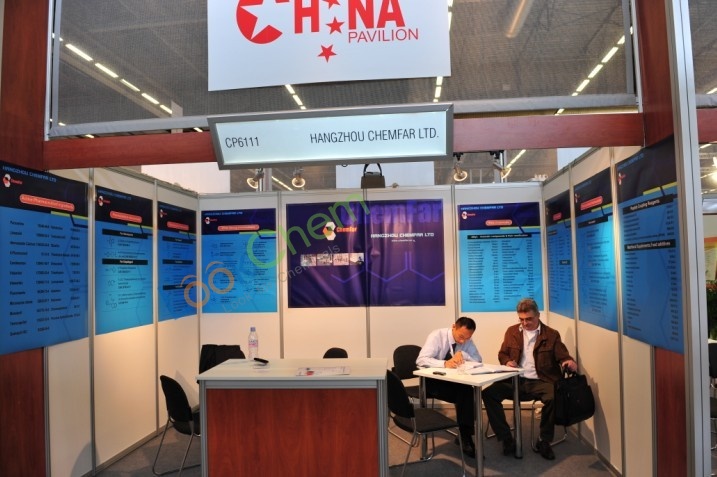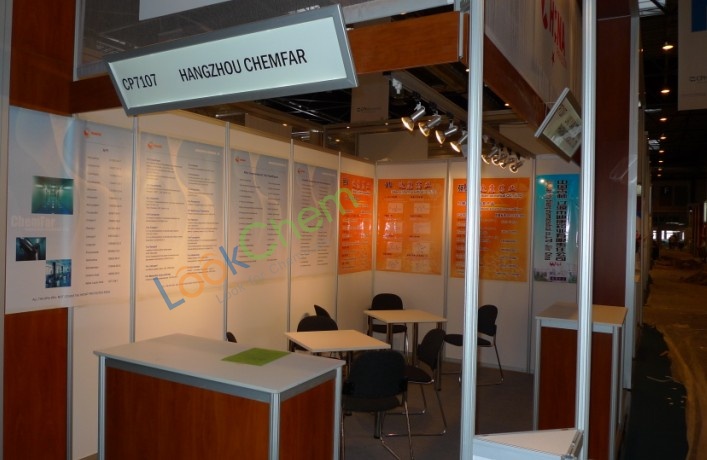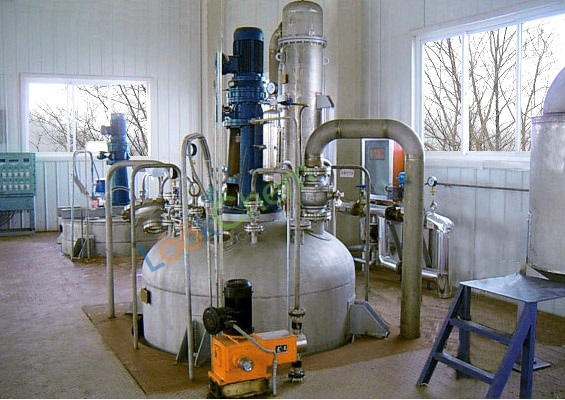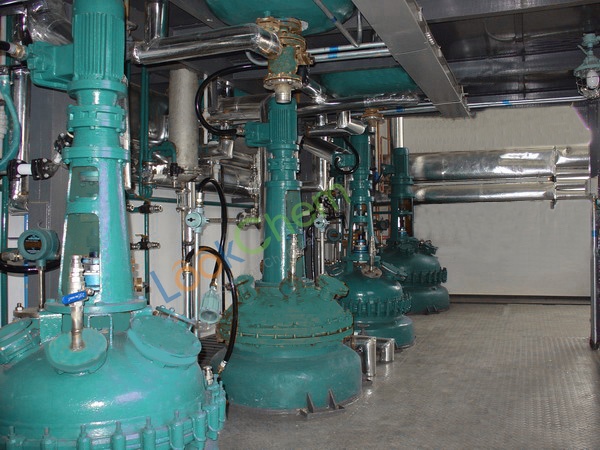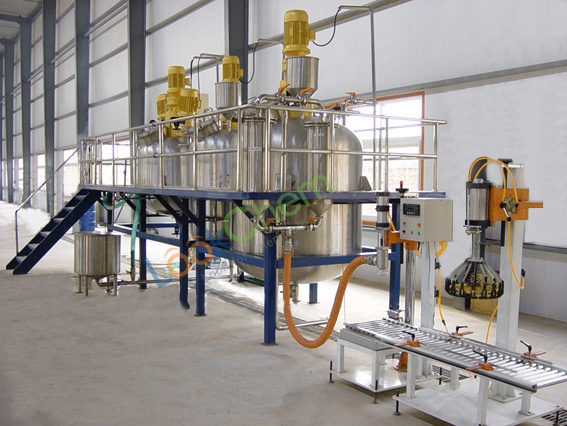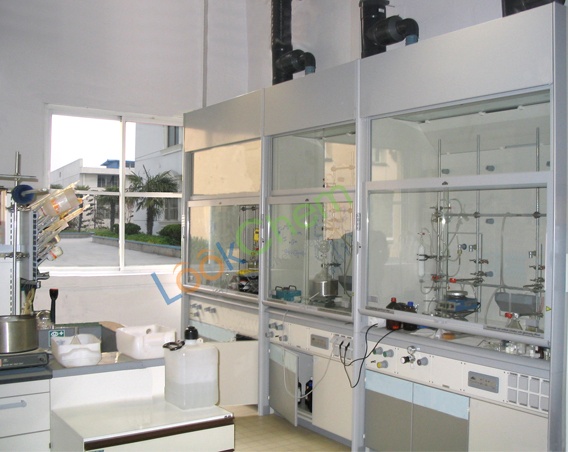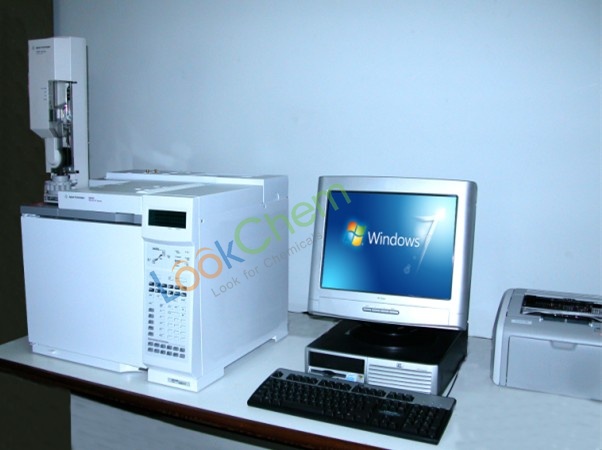Bitolylene Diisocyanate MSDS
- Product Details
- Company Profile
The material safety data sheet (MSDS) of Bitolylene Diisocyanate is one important component for product Bitolylene Diisocyanate's stewardship and workplace safety. You could refer to the Bitolylene Diisocyanate manufacturer for more detailed product information. And Bitolylene Diisocyanate msds below is provided by Hangzhou Chemfar Ltd. which focused on providing integrated development and manufacturing service to the pharmaceutical and fine chemical industry.
IDENTIFICATION OF THE SUBSTANCE/MIXTURE AND OF THE COMPANY/UNDERTAKING
Product identifiers
Product name: Bitolylene Diisocyanate (3,3'-Dimethylbiphenyl-4,4'-diyl diisocyanate)
CAS-No.: 91-97-4
Relevant identified uses of the substance or mixture and uses advised against
Identified uses: Laboratory chemicals, Manufacture of substances
HAZARDS IDENTIFICATION
Classification of the substance or mixture
Classification according to Regulation (EC) No 1272/2008 [EU-GHS/CLP]
Acute toxicity, Oral (Category 4)
Acute toxicity, Inhalation (Category 4)
Acute toxicity, Dermal (Category 4)
Skin irritation (Category 2)
Eye irritation (Category 2)
Respiratory sensitization (Category 1)
Specific target organ toxicity - single exposure (Category 3)
Classification according to EU Directives 67/548/EEC or 1999/45/EC
Harmful by inhalation, in contact with skin and if swallowed. Irritating to eyes, respiratory system and skin.
May cause sensitization by inhalation.
Signal word
Hazard statement(s): Danger
H302 + H312 + H332: Harmful if swallowed, in contact with skin or if inhaled
H315: Causes skin irritation.
H319: Causes serious eye irritation.
H334: May cause allergy or asthma symptoms or breathing difficulties if inhaled.
H335: May cause respiratory irritation.
Precautionary statement
Supplemental Hazard
P261: Avoid breathing dust.
P280: Wear protective gloves/ protective clothing.
P305 + P351 + P338: IF IN EYES: Rinse cautiously with water for several minutes. Remove contact lenses, if present and easy to do. Continue rinsing.
P342 + P311: If experiencing respiratory symptoms: Call a POISON CENTER or doctor/physician.
Other hazards
Lachrymator.
COMPOSITION/INFORMATION ON INGREDIENTS
Substances
Formula: C16H12N2O2
Molecular Weight: 264,3 g/mol
FIRST AID MEASURES
Description of first aid measures
General advice
Consult a physician. Show this safety data sheet to the doctor in attendance.
If inhaled
If breathed in, move person into fresh air. If not breathing, give artificial respiration. Consult a physician.
In case of skin contact
Wash off with soap and plenty of water. Consult a physician.
In case of eye contact
Rinse thoroughly with plenty of water for at least 15 minutes and consult a physician.
If swallowed
Never give anything by mouth to an unconscious person. Rinse mouth with water. Consult a physician.
Most important symptoms and effects, both acute and delayed
Cough, Shortness of breath, Headache, Nausea, Vomiting
Indication of any immediate medical attention and special treatment needed
no data available
FIREFIGHTING MEASURES
Extinguishing media
Suitable extinguishing media
Use water spray, alcohol-resistant foam, dry chemical or carbon dioxide.
Special hazards arising from the substance or mixture
Carbon oxides, nitrogen oxides (NOx)
Advice for firefighters
Wear self contained breathing apparatus for fire fighting if necessary.
Further information
no data available
ACCIDENTAL RELEASE MEASURES
Personal precautions, protective equipment and emergency procedures
Use personal protective equipment. Avoid dust formation. Avoid breathing vapors, mist or gas. Ensure adequate ventilation. Evacuate personnel to safe areas. Avoid breathing dust.
Environmental precautions
Prevent further leakage or spillage if safe to do so. Do not let product enter drains. Discharge into the environment must be avoided.
Methods and materials for containment and cleaning up
Pick up and arrange disposal without creating dust. Sweep up and shovel. Keep in suitable, closed containers for disposal.
Reference to other sections
For disposal see section 13.
HANDLING AND STORAGE
Precautions for safe handling
Avoid contact with skin and eyes. Avoid formation of dust and aerosols.
Provide appropriate exhaust ventilation at places where dust is formed.Normal measures for preventive fire protection.
Conditions for safe storage, including any incompatibilities
Store in cool place. Keep container tightly closed in a dry and well-ventilated place. Moisture sensitive.
Specific end uses
no data available
EXPOSURE CONTROLS/PERSONAL PROTECTION
Control parameters
Components with workplace control parameters
Exposure controls
Appropriate engineering controls
Handle in accordance with good industrial hygiene and safety practice. Wash hands before breaks and at the end of workday.
Personal protective equipment
Eye/face protection
Face shield and safety glasses Use equipment for eye protection tested and approved under appropriate government standards such as NIOSH (US) or EN 166(EU).
Skin protection
Handle with gloves. Gloves must be inspected prior to use. Use proper glove removal technique (without touching glove's outer surface) to avoid skin contact with this product. Dispose of contaminated gloves after use in accordance with applicable laws and good laboratory practices.
Wash and dry hands.
The selected protective gloves have to satisfy the specifications of EU Directive 89/686/EEC and the standard EN 374 derived from it.
Body Protection
Complete suit protecting against chemicals, The type of protective equipment must be selected according to the concentration and amount of the dangerous substance at the specific workplace.
Respiratory protection
For nuisance exposures use type P95 (US) or type P1 (EU EN 143) particle respirator.For higher level protection use type OV/AG/P99 (US) or type ABEK-P2 (EU EN 143) respirator cartridges.
Use respirators and components tested and approved under appropriate government standards
such as NIOSH (US) or CEN (EU).
PHYSICAL AND CHEMICAL PROPERTIES
STABILITY AND REACTIVITY
Reactivity
no data available
Chemical stability
no data available
Possibility of hazardous reactions
no data available
Conditions to avoid
Avoid moisture.
Incompatible materials
Strong oxidizing agents
Hazardous decomposition products
Other decomposition products - no data available
TOXICOLOGICAL INFORMATION
Information on toxicological effects
Acute toxicity
LD50 Intravenous - mouse - 56 mg/kg
Skin corrosion/irritation
no data available
Serious eye damage/eye irritation
no data available
Respiratory or skin sensitization
May cause allergic respiratory reaction.
Germ cell mutagenicity
no data available
Carcinogenicity
IARC:
No component of this product present at levels greater than or equal to 0.1% is identified as probable, possible or confirmed human carcinogen by IARC.
Reproductive toxicity
no data available
Specific target organ toxicity - single exposure
Inhalation - May cause respiratory irritation.
Specific target organ toxicity - repeated exposure
no data available
Aspiration hazard
no data available
Potential health effects
DISPOSAL CONSIDERATIONS
Waste treatment methods
Product
Offer surplus and non-recyclable solutions to a licensed disposal company. Contact a licensed professional waste disposal service to dispose of this material. Dissolve or mix the material with a combustible solvent and burn in a chemical incinerator equipped with an afterburner and scrubber.
Contaminated packaging
Dispose of as unused product.
Verified Supplier
Hangzhou Chemfar Ltd.
- Country:
 China (Mainland)
China (Mainland) - Year Established: 2002
- Business type: Other
- Integral:


Contact Details|Similar Products

Escrow ServiceMore
Secure Your Orders With escrow More Transparency,Less Uncertainty


 Add to inquiry cart
Add to inquiry cart

